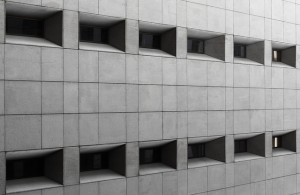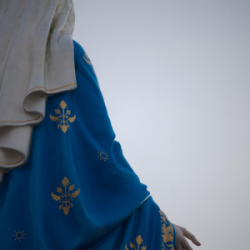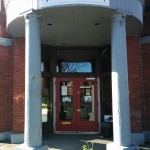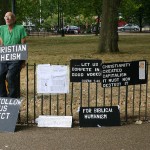At the end of the day at a conference called Creating Healing Communities, after about five hours of discussion about how we can improve the justice system in Washington state (and the US), there were a few minutes left for advocates to share important local issues for attendees to learn about and support.
One woman stood up and waved a packet of papers. “They’re building a new juvenile detention center just a few blocks from here,” in the historically black Central District of Seattle. “And it’s terrible. It’s already paid for. We want to stop it.” She gave some details for us to Google.

The woman spoke with the confidence of someone whose cause is already supported, like a person preaching to the choir. After five hours of presentations on how criminal justice in America is unfair, racist, and ultimately ineffective, it should have been obvious to us why we should stop building jails for kids.
Why we need a new youth prison.
The organizer of the conference, Reverend Terri Stewart, disagrees. “We have systems to fix before we can make that building go away,” she says, including everything from preschool to healthcare.
Rev. Stewart, who founded and directs the Youth Chaplaincy Coalition and serves as the Protestant chaplain in juvenile detention centers in the city and state, has logged hundreds of hours within the current detention center, talking and working with residents. “It’s difficult for me,” she adds, when people who haven’t been inside the current youth detention center talk about what should be done.
“Understand with your senses,” she says. The floors in the current center are slightly sloped, so when it rains, the residents’ rooms leak. There are no private meeting rooms for residents to talk with their lawyers or counselors. The kids deserve a better, more comfortable place to live.
At the same time, Rev. Stewart recognizes the tension. As she puts it, “I’m a both-and person.” On the one hand, juvenile detention hall residents deserve a better place to stay. On the other hand, the rate of incarceration of youth of color is massively higher than that of white youth, and a juvenile detention center is a symbol and a perpetrator of an unfair system.
There’s no denying that youth of color are unfairly imprisoned.
In Seattle, African-American juvenile offenders are arrested twice as often as white juvenile offenders. An African-American juvenile drug offender is 16.7 times more likely than a white offender to be arrested. This is wildly disproportionate to the population of African-Americans, which make up just under 8% of the total population. The stats are just as incriminating for adults.
In other words, the system is broken.
What one person is doing to help.
Rev. Stewart has been working to help the youth who are currently in this broken system. In addition to serving as a gatekeeper/trainer for volunteer Protestant chaplains, Rev. Stewart runs two programs: Creating Healing Communities and MAP (“My Action Plan”). Both programs train others to connect with incarcerated and formerly incarcerated youth and adults; she likes to say that her goal is to put herself out of a job.
Creating Healing Communities (tagline: “Walking with those affect by incarceration”) is a training program for congregations to learn about racial justice and incarceration, reducing stigma, supporting families of incarcerated people, and mentoring those returning to communities after incarceration.
The MAP program matches mentors—adults willing to “listen listen, love love”—with kids in juvenile detention to create “My Action Plan” for when they get out. By meeting once a week with their mentors for nearly three months, the kids leave with a concrete plan for what they can do when they return to their communities. And more importantly, they now have a relationship with an adult who cares about them.
Rev. Stewart became involved with prison youth in twelve years ago after participating in a Disciple Bible study class at her Methodist church. One assignment was “do something you’re uncomfortable doing.” At first, she was unsure what to do—as Rev. Stewart herself says, she is not shy, and her cheerful, talkative manner makes her at home almost everywhere she goes.
But then she heard a voice over her shoulder: “Go to prison.”
She contacted an organization called Kairos Prison Ministry, which led spiritual renewal retreats in prison, and found out that one of the members of the board lived minutes from her home. Soon, she was working with women whose boyfriends and husbands were incarcerated. “That led me to imagining youth whose parents were incarcerated,” she says, and eventually, to working with youth who had been incarcerated.
At the same time, Rev. Stewart began to feel a deepening calling to ministry. Having dropped out of college after two years to work, she went back to school to earn her bachelor’s—and the fastest route to a degree turned out to be pursuing Criminal Justice Administration. After that, she earned a master’s of divinity at Seattle University, where she hooked up with Joe Cotton, a Catholic youth chaplain. Her internship was at the juvenile detention center, where she found that there was no equivalent chaplain for Protestant volunteers—essentially, any well-intentioned Protestants with any background (including no background) in youth ministry could work with the imprisoned youth. She created the gatekeeper role for herself and upon graduation, filled it.
A year ago, Rev. Stewart realized that she was spread too thin. Instead of continuing to divide her time between ministry, advocacy, and training, she realized, “What I really needed to do was duplicate me.” When she learned about the East Coast organization Creating Healing Communities at a conference, she found the solution. She had a vision of a map of Washington dotted with communities that had been through training and could spread the love and care she has for imprisoned folks and their families.
How we can help.
The Creating Healing Communities conference I attended was run by Doug Walker, a minister who started the organization on the East Coast (and an ex-con himself).
At the conference, we learned ways that churches can do a better job of prison ministry—first, by not creating a special “prison ministry,” but rather by finding ways that each church can reach out and connect with the people incarcerated in its community.
I sat with fellow Valley and Mountain members at a table in the sanctuary of the First AME Church in Seattle, a church that welcomes a large number of ex-convicts and families of folks currently in prison. I don’t know anyone who had been to prison—though well over half of the 41 attendees in the room did—but I felt at home with the progressive crowd, who saw imprisonment as a roadblock to justice, not a just consequence for criminals.
Even in this big-thinking crowd (and perhaps because there were so many big thinkers at each of our tables), it seemed difficult to translate an issue like unjust imprisonment into concrete action. Seeing powerhouses like Rev. Stewart, who went back to school, created and found funding for a ministry, and advocated almost daily for imprisoned youth all while raising two children, can be intimidating. The Paul Farmers of the world don’t always inspire us to do better—sometimes, seeing the time and effort required to effect change makes us shy away from doing what we can.
When it came time to make an action plan for our own church, at first I had no idea where to begin. But we found small ways to make our church more welcoming and supportive of people in prison and their families. We’ll add incarcerated folks and their families to our prayers for the people, and we’ll share what we learned at the conference in a talk during service. A group of people in our church are going to protest the new detention center on Table-Turning Monday, a celebration of Jesus overturning the moneychangers’ tables at the temple. (Though I agree with Rev. Stewart that we need a new prison, many members of Valley and Mountain protest this building.)
Other churches shared ideas like adding inmates to the community’s visitation list that normally included only those home-bound due to age or illness; expanding prison pen-pal programs; utilizing a van to transport youth and their families to court appointments and meetings; and inviting ex-convicts to speak at services.
Hope for the future?
Whether the detention center is built or not—and since voters have already approved it, chances are it will be—the conversation has changed. On the city website about the new detention hall there is a link in bold letters at the top: “Learn what King County is doing to address racial disproportionality.”
The conversation is focused on—or at the very least includes—how to best to help youth and end the racism that pervades Seattle’s criminal justice system.
















